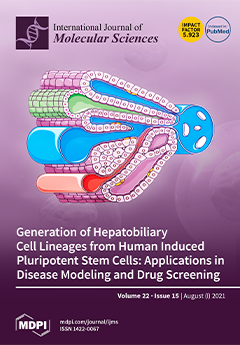Open AccessReview
Cannabinoids Drugs and Oral Health—From Recreational Side-Effects to Medicinal Purposes: A Systematic Review
by
Luigi Bellocchio, Alessio Danilo Inchingolo, Angelo Michele Inchingolo, Felice Lorusso, Giuseppina Malcangi, Luigi Santacroce, Antonio Scarano, Ioana Roxana Bordea, Denisa Hazballa, Maria Teresa D’Oria, Ciro Gargiulo Isacco, Ludovica Nucci, Rosario Serpico, Gianluca Martino Tartaglia, Delia Giovanniello, Maria Contaldo, Marco Farronato, Gianna Dipalma and Francesco Inchingolo
Cited by 31 | Viewed by 12854
Abstract
Background: marijuana, the common name for cannabis sativa preparations, is one of the most consumed drug all over the world, both at therapeutical and recreational levels. With the legalization of medical uses of cannabis in many countries, and even its recreational use in
[...] Read more.
Background: marijuana, the common name for cannabis sativa preparations, is one of the most consumed drug all over the world, both at therapeutical and recreational levels. With the legalization of medical uses of cannabis in many countries, and even its recreational use in most of these, the prevalence of marijuana use has markedly risen over the last decade. At the same time, there is also a higher prevalence in the health concerns related to cannabis use and abuse. Thus, it is mandatory for oral healthcare operators to know and deal with the consequences and effects of cannabis use on oral cavity health. This review will briefly summarize the components of cannabis and the endocannabinoid system, as well as the cellular and molecular mechanisms of biological cannabis action in human cells and biologic activities on tissues. We will also look into oropharyngeal tissue expression of cannabinoid receptors, together with a putative association of cannabis to several oral diseases. Therefore, this review will elaborate the basic biology and physiology of cannabinoids in human oral tissues with the aim of providing a better comprehension of the effects of its use and abuse on oral health, in order to include cannabinoid usage into dental patient health records as well as good medicinal practice. Methods: the paper selection was performed by PubMed/Medline and EMBASE electronic databases, and reported according to the PRISMA guidelines. The scientific products were included for qualitative analysis. Results: the paper search screened a total of 276 papers. After the initial screening and the eligibility assessment, a total of 32 articles were considered for the qualitative analysis. Conclusions: today, cannabis consumption has been correlated to a higher risk of gingival and periodontal disease, oral infection and cancer of the oral cavity, while the physico-chemical activity has not been completely clarified. Further investigations are necessary to evaluate a therapeutic efficacy of this class of drugs for the promising treatment of several different diseases of the salivary glands and oral diseases.
Full article
►▼
Show Figures






